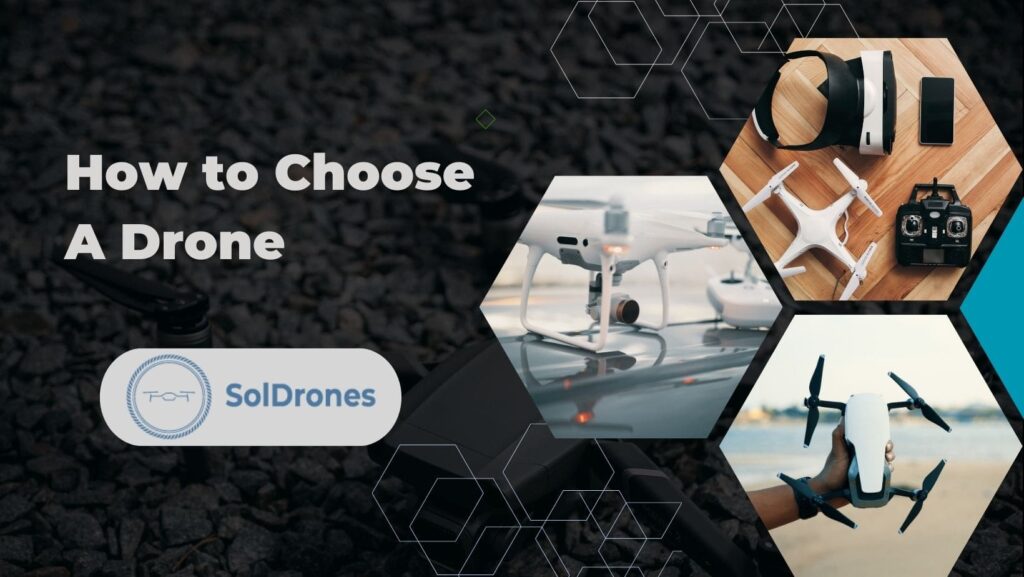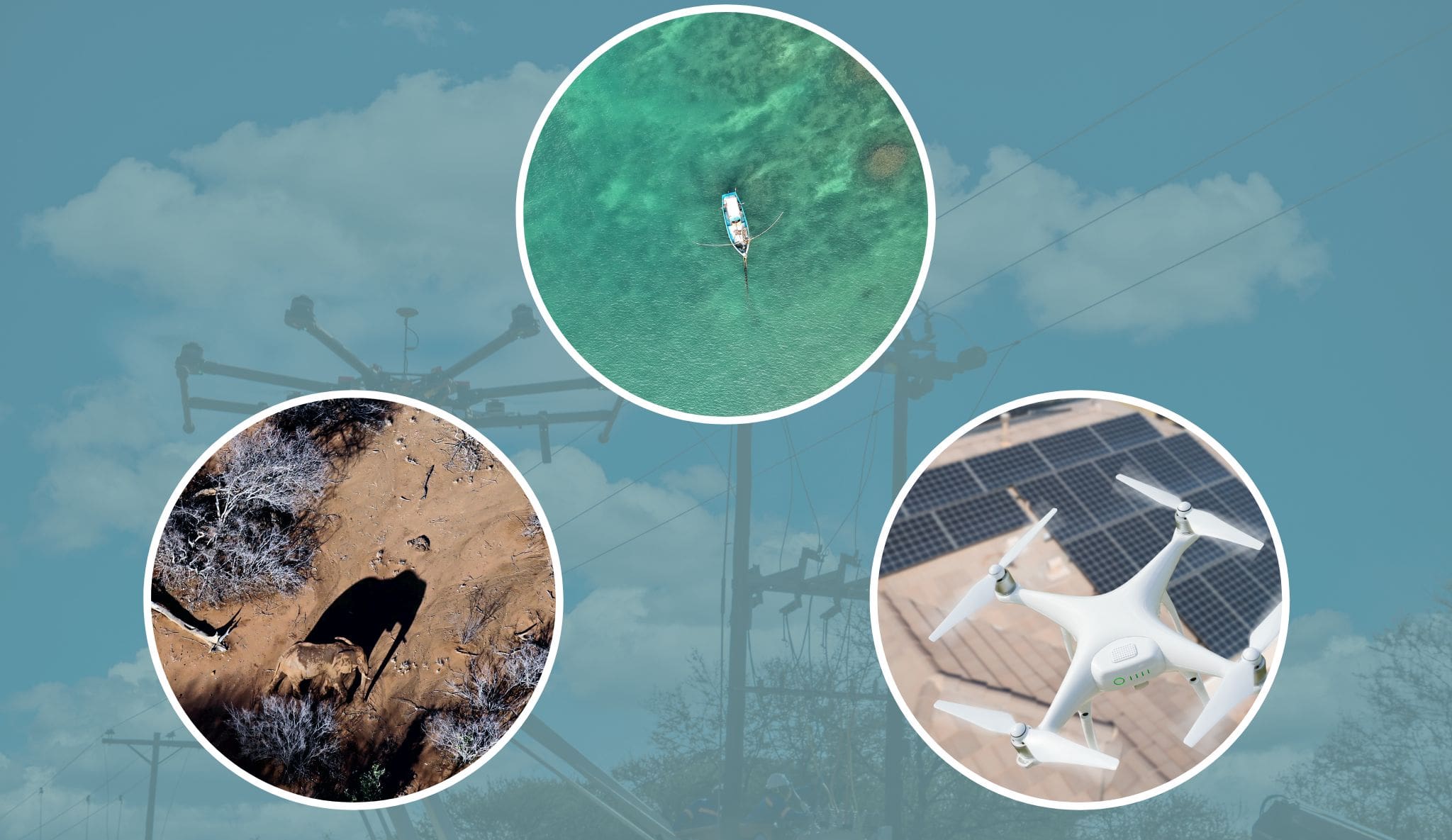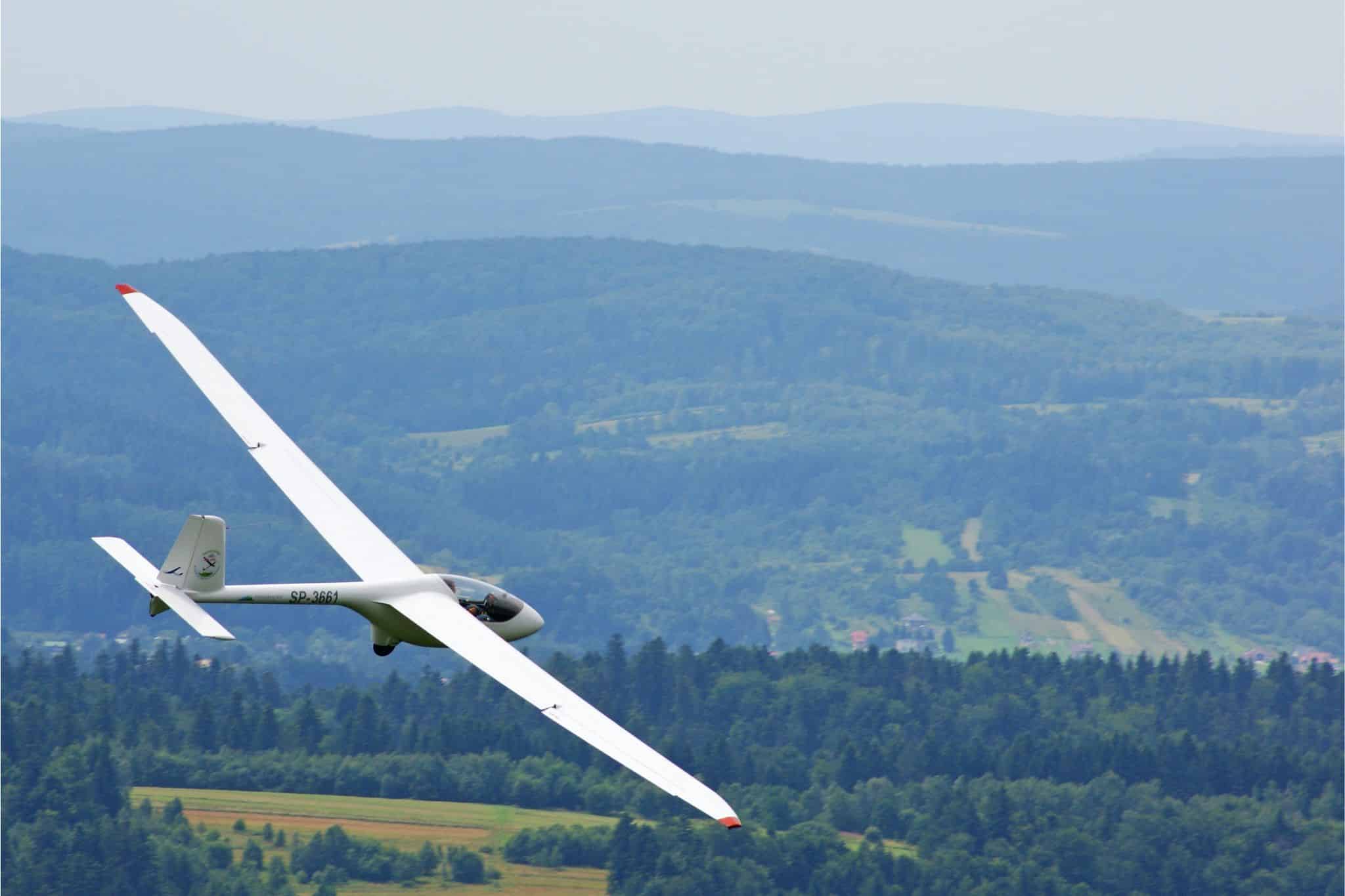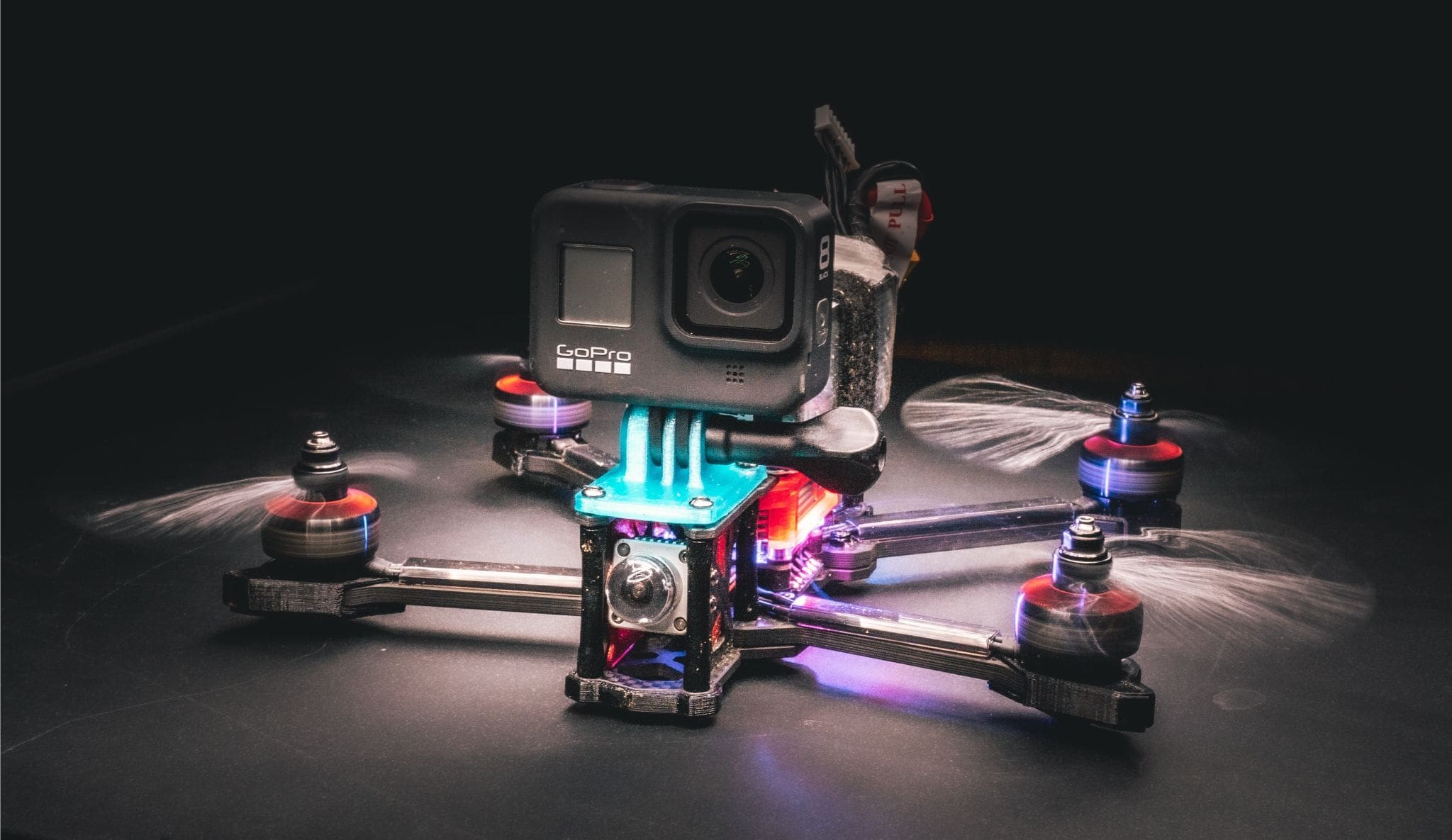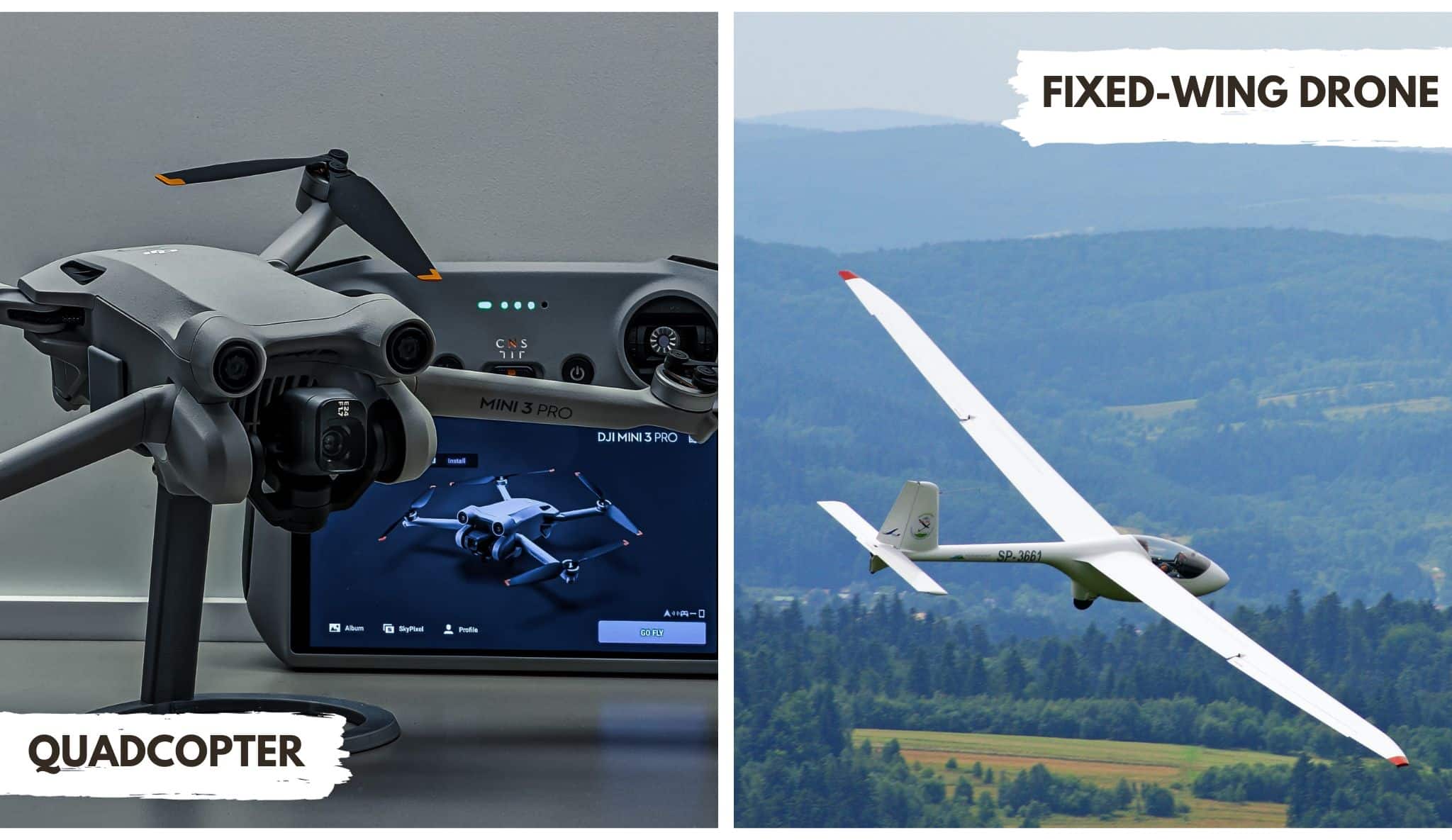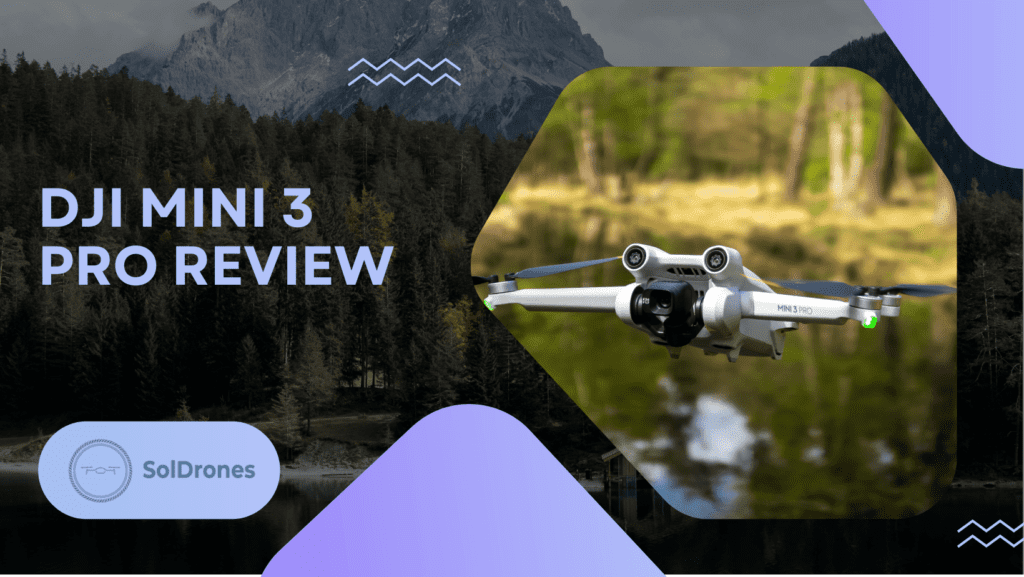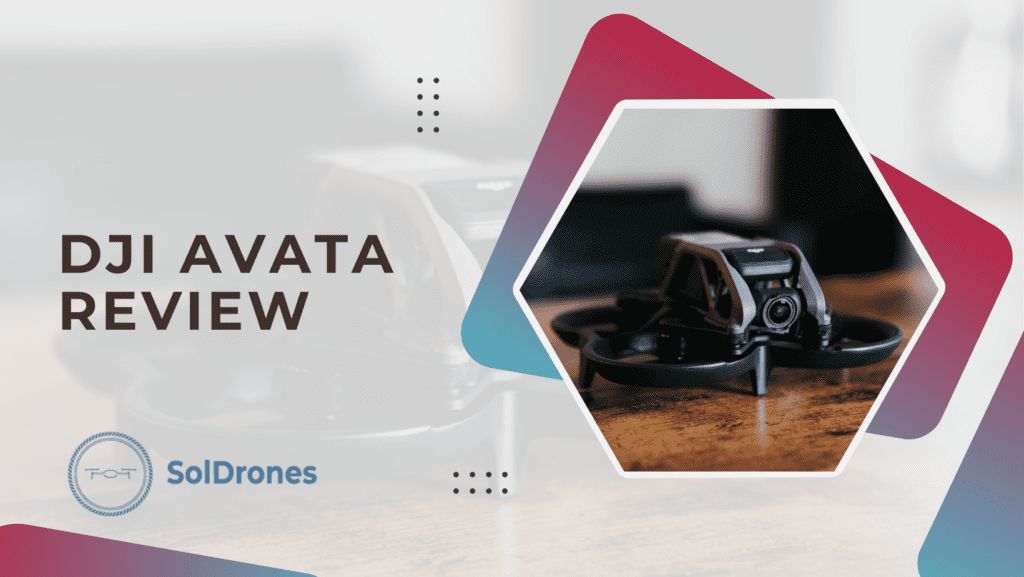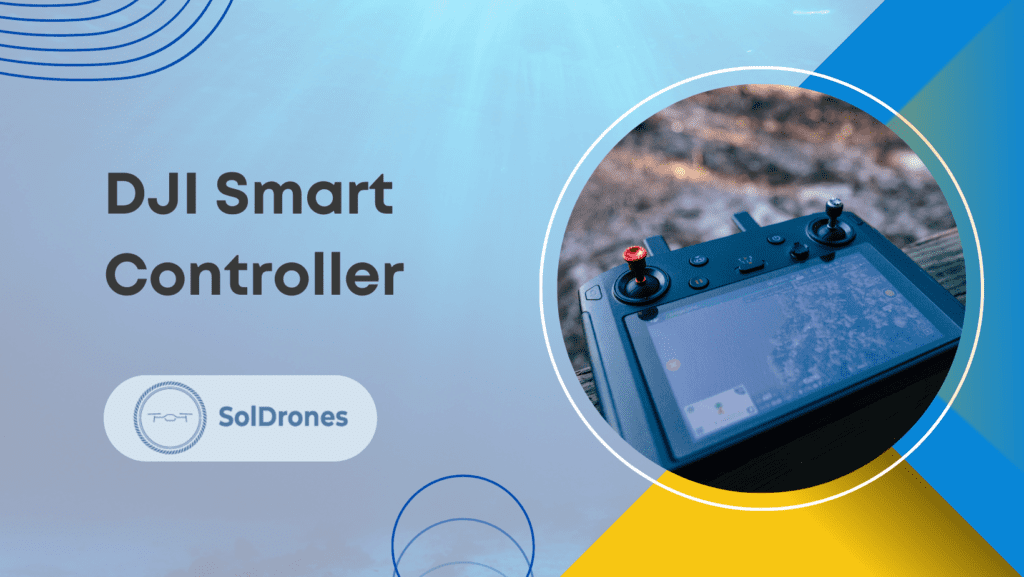Today, the drone market is filled with countless models, each promising a suite of features and capabilities.
From filmmakers capturing breathtaking aerial footage to hobbyists seeking a new perspective on the world and entrepreneurs dreaming up new, drone-driven services—selecting the right drone can be an overwhelming experience.
Always remember that not all drones are made equal.
How do you cut through the marketing noise and pinpoint the perfect flying companion that meets your needs and budget?
Always remember that not all drones are made equal. Whether you’re a first-time buyer or looking to upgrade for your drone flying needs, our comprehensive guide will illuminate the path to making an informed decision.
If you’re a beginner drone pilot looking to make a quick decision, the DJI Mini 3 Pro is an excellent choice at a very affordable price.
We’ve also created a comprehensive review on why the Mini 3 Pro is a great investment and unpack details like the camera capabilities, flight modes, and other features.
Article Highlights
- From photography to racing, identifying your primary purpose for a drone guides your purchasing decision.
- Setting a budget is crucial, with options ranging from affordable beginners’ models to professional drones.
- Today’s drone market is saturated with various models, each boasting unique features and capabilities.
How Do I Choose The Right One for Drone Flying?
Choosing the best consumer drones involves considering several factors, including your skill level, intended use, budget, and legal restrictions.
Here’s a detailed guide to help you make an informed decision:
Define Your Purpose
First, clarify what you intend to do with the drone. Are you interested in aerial photography, videography, casual flying, racing, or perhaps a specialized use like fishing or real estate photography? Because not all drones are made for specific purposes. The intended use will significantly influence which features you should prioritize.
Consider Your Skill Level
Beginner
If you’re new to flying, consider starting with a less expensive first drone designed for ease of use. Many beginner drones have features like automatic takeoff and landing, intuitive controls, and built-in safety measures.
Intermediate/Advanced
More experienced users may prefer drones with advanced features, higher speeds, and greater manual control capabilities.
Important Features to Consider
- Camera Quality: If you’re interested in photography or videography, look for camera drones with high-resolution, stability features like gimbals, and the ability to shoot in different formats.
- Battery Life: More extended battery life means longer flight times. Consider how long you’d like to use your drone between charges.
- Range: Think about the distance you’ll need your drone to cover. More advanced drones offer longer ranges.
- GPS: This feature is particularly useful for precise positioning and is crucial for functions like ‘Return to Home.’
- Speed and Height: You might want a drone that can fly fast and high for racing or wide aerial shots.
- FPV (First Person View): This is especially desirable for racers, allowing you to view a live video feed from the drone’s perspective.
- Durability and Repairability: Check how the drone is built and whether it can withstand crashes or harsh weather conditions. Also, consider the availability of spare parts.
- Portability: If you plan to travel with your drone, look for more compact designs or foldable arms for easier packing.
Set a Budget
Drones can vary significantly in cost, so setting a budget is important. More expensive drones typically offer more advanced features and capabilities, but starting with a budget-friendly option can be wise for beginners.
Understand the Legal Requirements
Research the drone laws in your area, as you may need to register your drone with a governmental agency, and there might be restrictions on where and how you can fly. Ensure you maintain the highest standard of drone safety possible, especially when flying around other people or animals.
Read Reviews and Watch Tutorials
Take the time to read product reviews, watch tutorials, and even join drone forums or communities. Learning from others’ experiences can give you valuable insight into what it’s like to own and operate different drone models.
Consider Additional Accessories
Think about any extra accessories you might need, such as batteries, propeller guards, carrying cases, or specific attachments like fishing rigs or extra sensors.
By considering these factors, you can select a drone that fits your skills, meets your needs, and allows for an enjoyable flying experience.
Remember, the “right” drone isn’t the same for everyone; it’s what suits your unique requirements and aspirations.
What Are The Different Types Of Drones?
Drones, also known as unmanned aerial vehicles (UAVs), come in various shapes and sizes, each designed with specific purposes in mind.
Understanding the different types of of this unmanned aircraft is key to selecting the one that best suits your needs.
Here are the main categories:
Multi-Rotor Drones
- Quadcopters: The most common type, especially for consumer use, quadcopters have four rotors. These drones are ideal for aerial photography, videography, and other situations where stability and hover capability are necessary.
- Hexacopters: With six rotors, hexacopters offer more lift and power than quadcopters. They are more stable and can carry heavier payloads, making them suitable for professional photography and industrial applications.
- Octocopters: The most powerful within the multi-rotor category, these have eight rotors and can handle substantial payloads. They provide excellent stability and redundant motors, ensuring they can land safely even if one or more motors fail.
Fixed-Wing Drones
These drones resemble a traditional airplane. They cannot hover in one place as multi-rotors can but are capable of covering more distance efficiently.
They require a runway or catapult for takeoff, and landing is typically achieved via a runway or by parachute. They’re used for large-scale mapping, agriculture, and environmental monitoring.
Single-Rotor Drones
Similar in appearance to helicopters, single-rotor drones have one big rotor (like a helicopter) and a tail rotor to control heading.
These drones are more efficient than multi-rotors and are better for long-endurance tasks. They are often used for specialized tasks that require sustained flight.
Fixed-Wing Hybrid VTOL (Vertical Takeoff and Landing)
These drones combine the benefits of multi-rotor and fixed-wing designs. They can take off and land vertically, yet they convert to horizontal flight once airborne, enabling them to cover vast distances efficiently. They are used for surveying large areas, search and rescue operations, and high-endurance missions.
Nano or Micro Drones
These tiny drones are often used for indoor recreation, but the military also employs them for surveillance due to their small size. They’re also gaining popularity in research and development contexts.
Racing Drones
Specifically designed for speed and agility, these drones are used in drone racing, a sport where pilots use FPV (First Person View) headsets to fly drones through a course at high speeds.
Tricopters
These have three rotors and are less common than quadcopters. They offer a balance of simplicity and power with a unique Y-shape, providing a different flying dynamic, and are popular among hobbyists for their agility.
Aquatic or Underwater Drones
Specifically designed for underwater exploration, these drones are waterproof and often have advanced features to navigate and perform underwater tasks. They’re used for marine research, search and recovery, and underwater videography.
Each type of drone has its advantages and drawbacks and is suited for different applications. Your choice depends on several factors, including your budget, skill level, and what you intend to use the drone for.
How Do I Choose Between Quadcopter And Fixed-Wing Professional Drones?
Choosing between a quadcopter and a fixed-wing drone depends on several factors tied to your specific needs and objectives for drone use. Here’s a breakdown to help you make an informed decision:
Flight Characteristics and Needs
Hovering:
- Quadcopter: Capable of hovering in place, making it suitable for tasks that require a stationary position above the ground, like aerial photography, inspections, or recreational use.
- Fixed-Wing: Cannot hover as it requires forward motion to stay airborne, making it less suitable for stationary tasks.
Endurance and Distance:
- Quadcopter: Generally has a shorter battery life and covers less distance than fixed-wing models due to the energy used to keep it airborne.
- Fixed-Wing: This can cover more distance and has a longer battery life, ideal for tasks like large-area mapping, surveillance, and agricultural monitoring.
Takeoff and Landing:
- Quadcopter: Takes off and lands vertically, requiring less space and making it suitable for use in more confined areas.
- Fixed-Wing: Needs a runway or catapult for takeoff and a runway or a safe, clear space for landing, necessitating more preparation and space.
Payload Capacity:
- Quadcopter: Often has limited payload capacity, meaning it can carry less additional weight (like cameras, sensors, or other equipment).
- Fixed-Wing: Generally can carry a larger payload, beneficial for commercial or specialized applications that require additional equipment.
Ease of Use and Maintenance:
- Quadcopter: Typically easier for beginners to learn to operate and doesn’t require the assembly of many fixed-wing drones. However, it may require more frequent repairs and part replacements, especially from crash landings.
- Fixed-Wing: Can be more challenging to learn to pilot, especially during takeoff and landing. They may require less day-to-day maintenance, but repairing a fixed-wing drone can be more complex
Budget and Cost:
- Quadcopter: Prices vary widely based on features, but starter models can be quite affordable. Advanced models, especially those with high-quality cameras or sensors, can be costly.
- Fixed-wing: Tend to be more expensive due to their specialized nature, greater endurance, and larger payload capacity. They are often a significant investment used for commercial or professional applications.
Specific Applications:
Consider what tasks you need the drone for. If it’s for leisure, photography, or videography, a quadcopter is usually preferred.
A fixed-wing might be more efficient for professional mapping, surveying large areas, or environmental monitoring.
Ultimately, your choice between a quadcopter and a fixed-wing drone will depend on your specific needs, budget, and operational constraints.
Each has its unique set of advantages and is suited for different applications. Assessing your priorities and what you hope to achieve with your drone is the first step toward making the right decision.
What Types Of Toy Drones Are Best For Beginners?
Drones have become a popular tool for various uses, and for beginners, certain types are more suitable due to ease of control, safety features, and affordability. Here are the types of drones that are best for beginners:
- Ready-to-Fly (RTF) Drones: These drones require the least amount of setup and assembly. They are perfect for beginners because they are usable straight out of the box, typically needing only a simple calibration or battery charge.
- Drones with Stability Features: Look for drones that offer GPS stabilization or hover functions, which help maintain control and prevent the drone from drifting uncontrollably. These features help beginners get used to drone piloting with less risk of crashes.
- Drones with Beginner Modes: Some drones come with a beginner mode, limiting the drone’s speed and height. This mode helps new pilots learn to control the drone without the risk associated with higher speeds and altitudes.
- Mini and Micro Drones: These smaller drones are excellent for beginners because they are typically less expensive and less likely to be damaged in a crash. They’re great for indoor flying and practice before graduating to larger, more expensive models.
- Drones with Durable Designs: Drones designed with guards around the propellers or are stated to have shock-proof features or robust frames can withstand most minor crashes or impacts, which are common learning incidents for new pilots.
- Drones with Simulators or Practice Programs: Certain models come with flight simulators that allow you to practice on a computer before you try the real thing. This feature is excellent for building confidence and improving your flying skills without the risk of crashing an actual drone.
- Affordable Drones with Good Feature Sets: Many beginner-friendly drones are very affordable and come equipped with decent cameras, adequate flight times, and other features that make them a great value for their price. These drones are good for pilots who want to practice and not worry too much about potential crashes or damages.
By starting with any of the above types of drones, beginners can learn the basics of drone piloting safely, controlled, and cost-effectively. They might move on to more advanced drones with enhanced capabilities as skills improve.
How Can I Find A Quality Drone Within My Budget?
Finding a quality drone within your budget requires research, understanding your specific drone usage needs, and being aware of the features that are most important to you. Here’s how you can go about it:
Define Your Needs and Budget
Understand what you need in a drone. Are you using it for recreational purposes, photography, or technical endeavors like 3D mapping? Determine your maximum budget. Knowing your spending limit helps narrow down options.
Research and Compare
Start by researching drones that fit your criteria. Online retail stores, forums, and drone enthusiast websites have vast amounts of information and reviews. Compare drones within your budget based on specifications and features. Look at aspects like flight time, camera quality, range, and user feedback.
Look for Deals or Used Drones
Check for sales, discounts, or promotional offers. E-commerce sales days can offer substantial discounts. Consider certified refurbished or used drones. Many are in “like new” condition and meet manufacturer standards, selling for a fraction of the price.
Prioritize Essential Features
Decide which features are non-negotiable for you. For instance, a good-quality camera might be your top priority if you’re into photography.
Don’t pay for features you don’t need. For example, if you’re not interested in high-end photography, you might not need a drone with expensive, high-quality cameras.
Read Reviews and Watch Tutorials
Review user reviews on retail sites, watch unboxing and demo videos, and read drone technology blogs to understand real-world usage. Tutorials and online forums can provide insights into a drone’s ease of use and any common maintenance issues.
Consider the Total Cost of Ownership
Remember, the drone purchase may just be the beginning. Consider additional costs like spare batteries, propeller guards, carrying cases, or any needed accessories. Investigate potential repair costs and the availability of spare parts.
Check Warranty and Customer Support
A good warranty can save you money on repairs and parts replacement. Be sure to understand the warranty coverage for your chosen drone. Consider brands that offer comprehensive customer support, including troubleshooting and servicing.
By taking these steps, you can make an informed decision that ensures you get a quality drone that fits your needs without exceeding your budget.
Balancing cost with features is key, and compromising on less important aspects can free up the budget for essential features.
How Much Do You Have To Spend To Get Decent Flying Drones?
The price range for decent drones varies depending on the features, capabilities, and brand. However, you can generally expect to spend between $300 to $1,000 for a drone that offers a good balance of quality, performance, and value.
Here’s a breakdown of drone prices based on their capabilities:
Beginner Drones (Under $300):
These drones are typically small, lightweight, and easy to fly, making them ideal for learning the basics of drone flight.
They may have basic cameras and limited features, but they offer a fun and affordable way to get started with drones.
Mid-Range Drones ($300-$1,000):
This category includes drones with better cameras, longer flight times, and more advanced features like GPS navigation and obstacle avoidance. They are suitable for recreational flying, aerial photography, and even professional applications.
High-End Drones ($1,000 and above):
These drones offer the best in terms of camera quality, flight performance, and intelligent features.
They are often used by professional photographers, videographers, and drone enthusiasts who demand the highest level of performance and image quality.
Here are some specific examples of drones in each price range:
Beginner/ Cheaper Drones:
- Ryze Tello: < $200
- Holy Stone HS175D FPV Drone: <$200
- Potensic ATOM 3: < $400
Mid-Range Drones:
- Autel Robotics EVO Nano+: $950
- DJI Mini 3 Pro: <$1,500
High-End Drones:
- DJI Mavic 3: $2,200
- Autel Robotics Evo II Pro: $3,000
- Skydio 2+: $1,099
Ultimately, the best drone for you will depend on your budget, skill level, and intended use. A beginner drone is a great way to learn the ropes without breaking the bank if you’re just starting out.
As you gain experience and your needs evolve, you can consider upgrading to a more advanced drone with more features and capabilities.
What Should I Get For My First Drone?
Getting your first toy drones is an exciting experience, but the wide range of options available can make the decision quite challenging.
Based on the criteria above, here are a few models that are often recommended for first-time drone users:
- DJI Mini 2 or DJI Mavic Mini: These are lightweight, portable, and user-friendly, yet they offer features like a high-quality camera and stable flight controls. They are a bit more of an investment but provide features that can grow with your skills.
- Ryze Tech Tello: Made in collaboration with DJI, it’s a budget-friendly option that still provides technology from a top drone manufacturer. It’s great for beginners and has an educational aspect if you’re interested in programming.
- Holy Stone HS Series: Holy Stone produces a range of drones, many of which are beginner-friendly with decent cameras and features that make it easy to fly drones.
- Parrot Anafi: While a bit more expensive, it’s known for its great camera and ease of use, good for beginners serious about photography or videography.
Remember, the best drone for you depends on your personal needs, interests, and budget. Whichever model you choose, make sure to practice in a safe, open environment and familiarize yourself with the controls and features before attempting more complex flights or photography.
Final Thoughts
Selecting the right professional drones can seem daunting, with various models boasting various features. Yet, you can confidently navigate the options by prioritizing your specific needs, budget, and skill level.
Whether you’re capturing cinematic vistas, embarking on racing adventures, or merely exploring the skies, your ideal drone awaits.
As you embark on this aerial journey, remember that the right drone amplifies your current passions and unveils new horizons to explore.
FAQs
Do I need a license to fly a drone?
Licensing requirements vary by country and region. In many places, recreational users do not need a license, but commercial drone pilots require certification. Always check local regulations.
How much should I budget for a good-quality drone?
Drone prices vary significantly. Basic models can be under $100, while advanced camera drones with high-resolution and stable flight features can range from $500 to several thousand dollars.
Is it hard to learn to fly a drone?
Most drones often have beginner-friendly features like automatic takeoff and landing, but mastering maneuvers requires practice. Start with an affordable model to learn the basics.
Can I fly a drone where I live?
Drone flight is regulated and can be restricted in certain areas for safety, privacy, or security reasons. Check for no-fly zones, local rules, and regulations in your area before flying.
What’s the difference between a camera drone and a racing drone?
Most drones with camera are built for stability and high-quality aerial photography, whereas racing drones are designed for speed and agility, often lacking advanced imaging capabilities.
How long can a drone fly on a single charge?
Flight times vary by model. Smaller drones may fly for 10 minutes, while high-end models can operate for 30 minutes or more. Consider investing in extra batteries for extended use.
Do all drones come with cameras?
No, not all professional drones feature cameras. Some are designed specifically for flight practice or racing. If photography or videography is your goal, ensure your chosen drone includes a camera or has the capacity for a camera attachment.
Are there weather conditions that I should avoid when flying a drone?
Yes, avoid flying in high winds, rain, or thunderstorms, as these conditions can damage your drone or make flying more challenging and less predictable.
What features are important for aerial photography and videography?
If you’re interested in drone photography, look for high-resolution cameras, stability features like gimbals, and drones with long battery life to maximize your time capturing footage.
What should I know about drone maintenance?
Regularly check your drone for wear and tear, keep it clean, calibrate sensors as needed, update the firmware, and follow the manufacturer’s battery care and storage guidelines.

